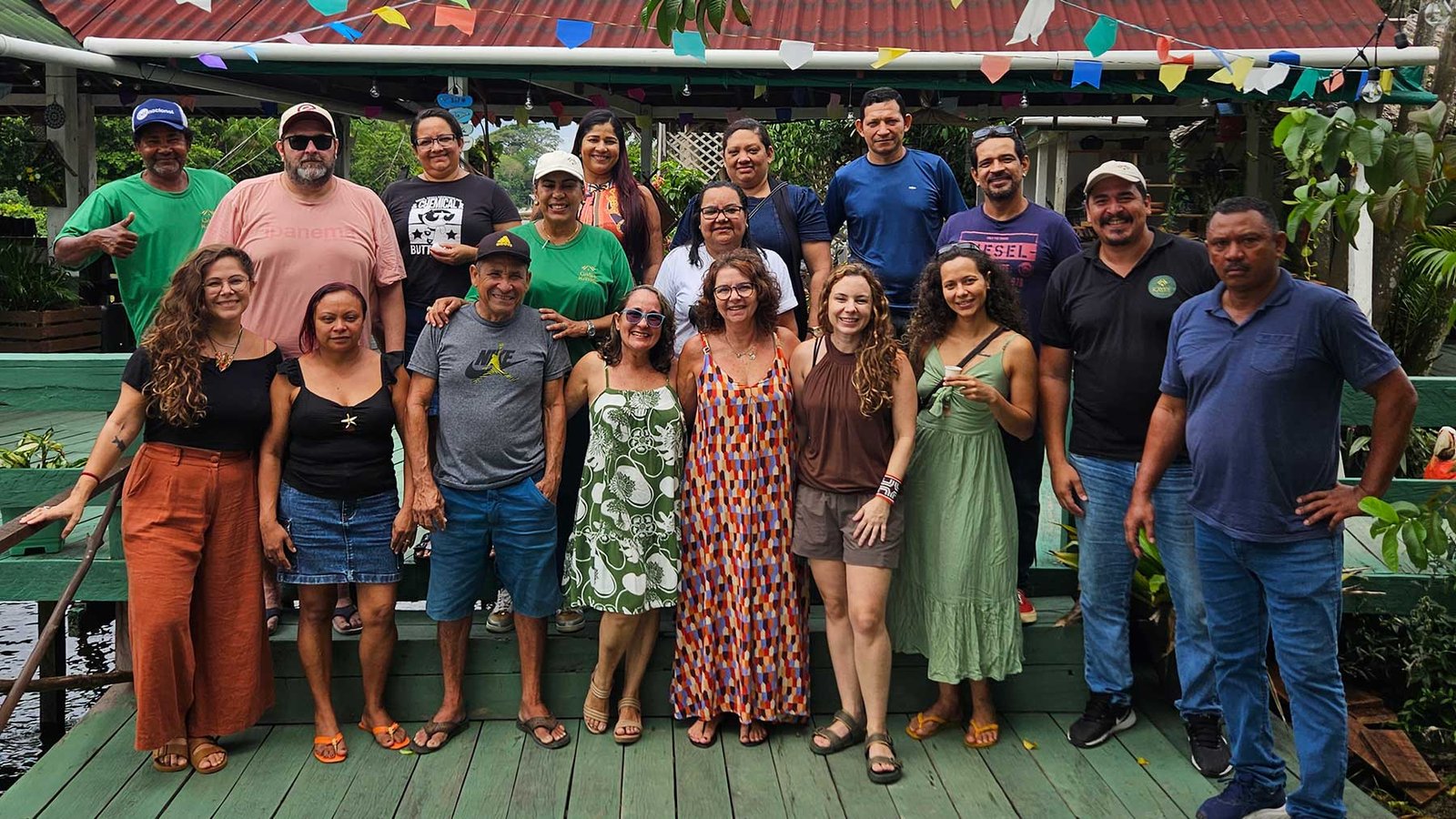When we talk about a tourist route, we’re not just talking about a path. We’re talking about permanence, experiences that connect and make sense of each other. A tourist product that, when organized, communicates an identity, a narrative and a unique way of living in that territory. This is the heart of the work carried out on Combu Island, in Pará.
The Combu Route is an initiative of National Sebrae, in partnership with Sebrae Pará, , which entrusted Raízes Sustainable Development with carrying out the project. The aim was to help organize and structure community-based tourism in one of the most symbolic regions of the Pará Amazon, extending the length of stay of visitors and valuing all that this place already has to offer – its people, its knowledge and flavors.
Combu: a beloved destination, but still little explored
Combu Island is a beloved destination for people from Pará and is already well known regionally. Located less than 15 minutes by boat from Belém, it is famous for its riverside restaurants, for bathing in the igarapés and for the typical cuisine that fills the table and the soul. But so far, tourism there has almost always been in the form of short, half-day trips.
Rota Combu’s proposal is to create a more structured tourism product that invites visitors to spend two or three days on the island, experiencing everything it has to offer in a deeper and more transformative way.
How to make sure it all works?
Our role in this process is to help stitch these elements together into an integrated itinerary that is sustainable for the territory, viable for local businesses and unforgettable for visitors. The project focused on supporting the structuring of local governance, with three operators from the island itself responsible for organizing the experiences in an articulated manner. This ensures that the attractions are accessed responsibly and that the benefits of tourism are better distributed among those who live on and build the island every day.
In addition to the collective construction of the route, the project focused on its promotion and strategic positioning. Actions included famtours – familiarization trips aimed at tour operators – and relationships with DMCs (Destination Management Companies), which are companies that specialize in managing tourist destinations and act as a bridge between travellers and local services.
A brand and new visual identity were created for Rota Combu, which led to exclusive printed products such as folders, totems, flags, windbanners, T-shirts, hats, ecobags, stickers and fridge magnets. There was also the production of digital materials such as this website, an institutional video and the instagram profile @rotacombu.
The Route’s launch included an on-site event at Combú itself in September for invited guests and a more open celebration at ABAV National in Rio in October 2025, as well as actions during COP30.
All this was nothing but a first step, and we know that creating a route is no simple task. It involves listening, dialog, taking care of people’s time and respecting the local way of life. It involves constant reworking and, in this sense, COP is not the point of arrival, but the starting gate for the legacy that is intended to be built moving forward.
